THE GREEN LINE
ORIGINAL STORY
Story Circles: How we use this Indigenous tool when reporting on solutions with communities
The Green Line spoke to Action Journey event attendees, an Indigenous support worker and a pioneering journalist to learn how this method can be used to encourage open conversation on challenging subject matter and to strengthen local reporting.
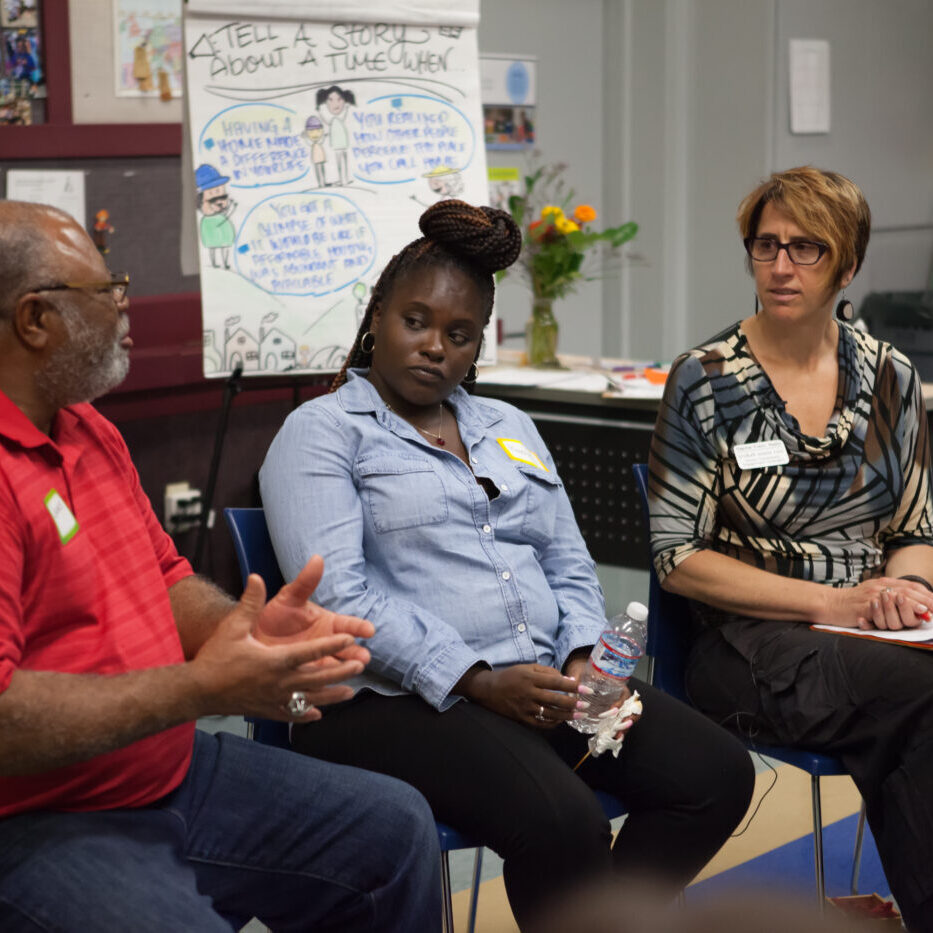
Jesikah maria ross (right) hosted Story Circles in 2017 that focused on the housing affordability crisis in Sacramento, California.
📸: Vanessa Nelson

MELANIE KALOGIROU
University of Toronto student in the joint journalism program with Centennial College. Grew up in Scarborough, passionate about inclusive storytelling, and loves talking about entertainment and music.

Haruka Ide
Journalism student at Centennial College. Raised in Japan as a triplet and passionate about understanding how people’s identities are shaped. Currently exploring nature in Toronto as a squirrel lover.
June 10, 2024
What is a story circle?
“Welcoming,” “comfortable” and “openness” were some of the words used to describe The Green Line event on Toronto’s housing crisis, particularly our use of “Story Circles.”
As part of its Action Journey model, The Green Line uses the Story Circle method as a means of surfacing community-driven solutions to specific problems among Torontonians who are facing challenges in the city, and want to build connections with others who are dealing with the same problems.
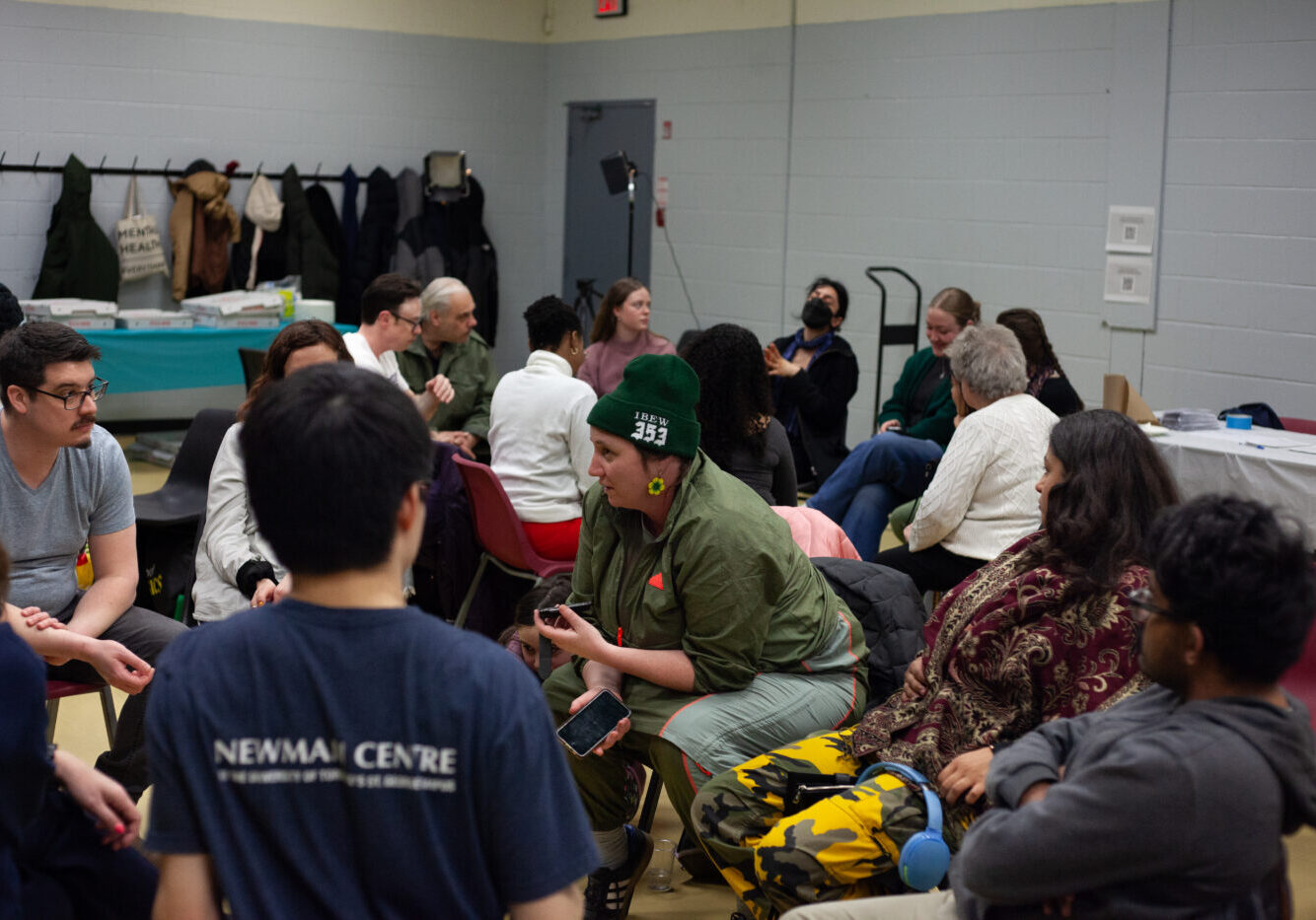
THE GREEN LINE'S HOUSING CRISIS ACTION JOURNEY AT LAWRENCE HEIGHTS COMMUNITY CENTRE ON TUESDAY, MARCH 19, 2024.
📸: No Demovictions.
“The event helped me make real-life connections,” one attendee shared. “Googling solutions isn’t enough nowadays, so it was good to hear stories of people with first-hand experience.”
Another person said, “I shared during the Circle, and also while connecting with people after Circle time! It was great to chat with people and build connections.”
The Green Line's “Action Journey” model explores one systemic problem in a given month to encourage Torontonians to take action on it. Our model includes four steps across one month: an explainer published on the first week, an in-depth piece of journalism published on the second week, an event hosted on the third week and a solutions article published on the fourth week.
On March 19, The Green Line held our housing crisis event. To start things off, three storytellers shared their experiences with housing in the city, which one attendee described as “raw and authentic.”
After the storytelling, The Green Line team hosted a Story Circle, which played a crucial role in the Action Journey’s third step by enabling community members to connect, chat and brainstorm solutions to a problem. Attendees separated into smaller circle group discussions, where they discussed questions like, “What housing challenges have you experienced in Toronto?” and “How did you solve your housing challenges in Toronto?”
Attendees cited an intimate environment, with people who had “safe” body language and a strong willingness to listen to other people’s experiences as the reason for why they felt they could open up and share personal stories with housing in Toronto.
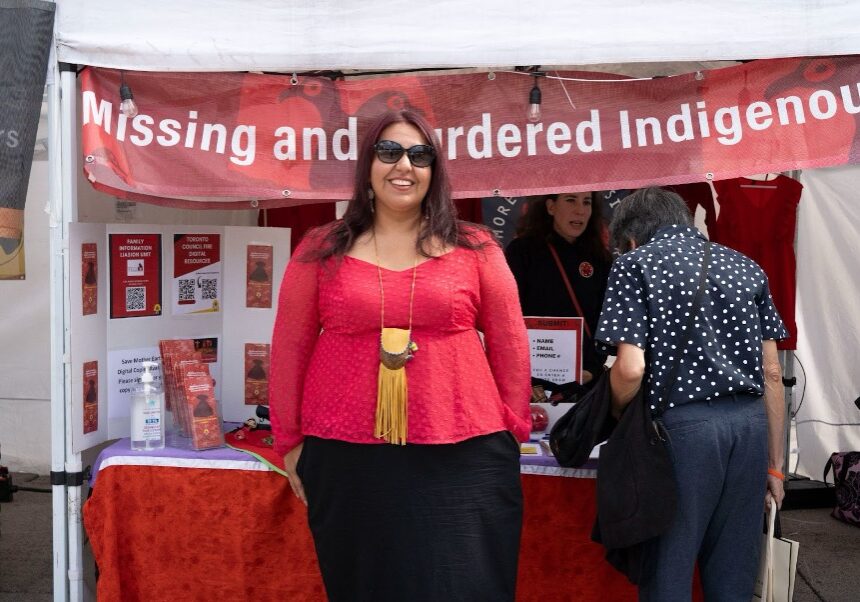
Angela Boyer at the 6th annual Indigenous Legacy Gathering at Nathan Phillips Square on Sept. 29, 2023.
📸: Haruka Ide/The Green Line.
The sharing circle’s Indigenous roots
Indigenous communities — including the Inuit, Métis, Mi’kmaq, Anishinabek and Cree Nations — use Story Circles or “sharing circles” as part of their cultures, according to Angela Boyer, a support worker at the Toronto Council Fire Native Cultural Centre.
"The way we sit in a circle with our peers shows that we sit side by side. No one's above you, no one’s behind you, and it signifies equality,” Boyer says.
She adds that for ceremonial purposes, some communities, such as the Cree Nation, open the easternmost door of the meeting place where their circle is being held because this practice represents new beginnings. The sun rises in the east, welcoming a new day of life and new blessings.
“The reason why that circle is so significant is because usually the space that's open is the Eastern Doorway — that's where the sun rises in the morning,” Boyer explains, adding that sharing circles are used in a variety of activities, including dancing and counseling.
The sharing circle usually begins with introductions to “create that sacred safe space,” Boyer says. If the circle’s goal is discussion about a specific topic, sometimes participants may want to propose a change or explore an idea, so a “talking stick” is a significant item that participants must hold before they’re permitted to speak.
“The person that's holding it is the only one to be talking at that time; and then when the person is finished, they'll then pass it on to the next person,” she explains. “It might be a feather, but that sacred item depends on what that circle is for, including healing or singing.”
Boyer adds that Indigenous music is also occasionally incorporated into a sharing circle, along with food, such as berries and cedar tea.
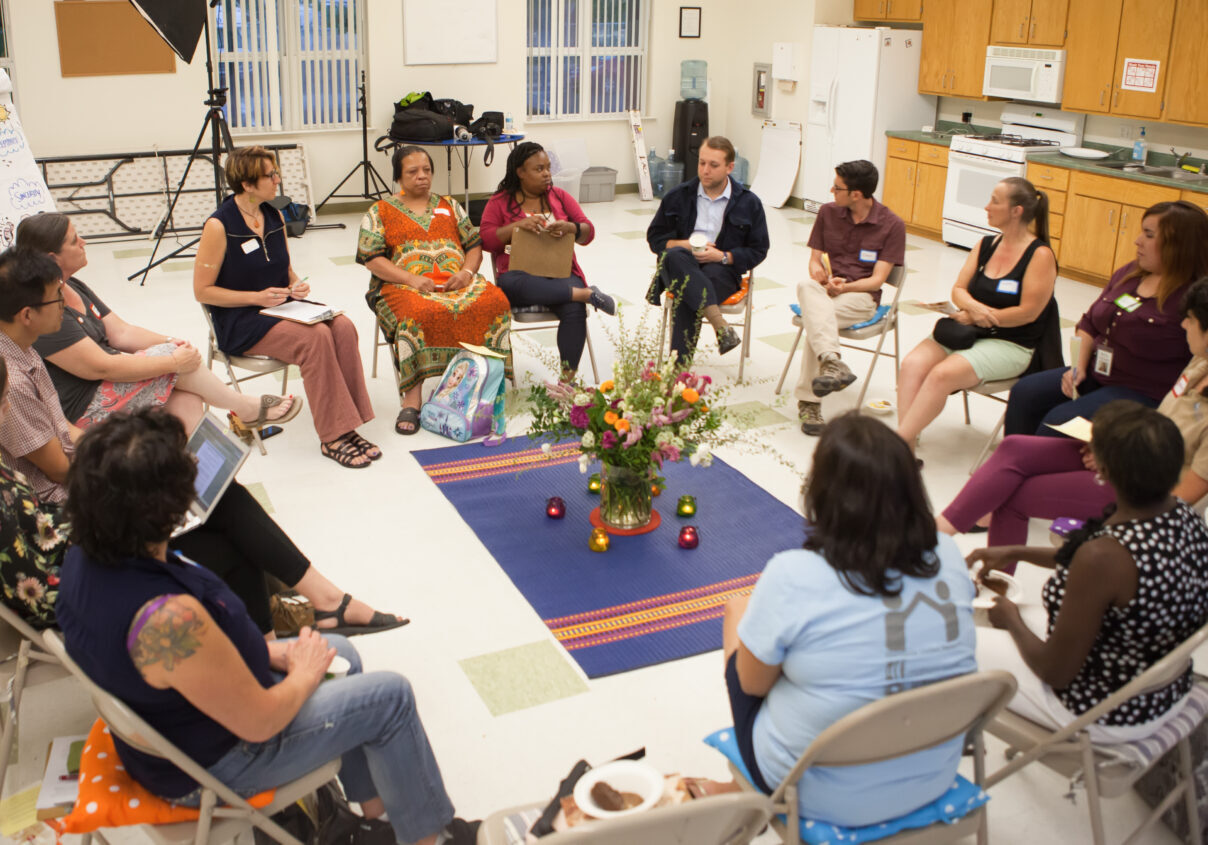
Jesikah maria ross (far left in pink pants) hosted Story Circles in 2018 that focused on the housing affordability crisis in Sacramento, California.
📸: Vanessa Nelson.
Adapting story circles for journalism
Jesikah maria ross has been hosting Story Circles in a journalistic context for the past two decades, including ones she held for Capital Public Radio in 2017, which focused on the housing affordability crisis in Sacramento, California.
“[Story circles] are designed to create pathways for people to come together and listen, learn and decide what they want to do next,” ross explains.
She says the journalism she practices is “community-centred” or “community-engaged,” and that Story Circles can be an effective strategy for listening to communities. Before starting her work, ross was inspired by community-engaged theatre, such as Roadside Theatre and Junebug Productions. Capital Public Radio shares guidelines for hosting Story Circles. Here’s a quick rundown of how the process works:
- Setting the stage
- Welcome and introductions
- Describing the purpose and process of Story Circles
- Story-sharing
- Small group reflections
- Full group conversation
- Closing
Facilitators can assist by providing name tags and food to help guests better connect with each other. They can also allocate designated time for each participant to speak, so everyone gets a chance to share. Finally, participants can share resources and their contacts for further brainstorming and problem-solving.
Ross collaborates with community leaders to prepare Story Circles, determining who to invite and to help set the right context. These leaders can guide newsrooms in creating safe and comfortable spaces based on the relationships they already have with the focus communities. For instance, they can advise on the languages that should be spoken and culturally relevant food.
Ross advises nonprofit organizations and civic agencies to work with a local newsroom to host Story Circles. These kinds of collaborations help newsrooms understand the needs, challenges and strategies of the participating organizations, which also benefit from listening to the attendees because they’ll learn how to improve their community services.
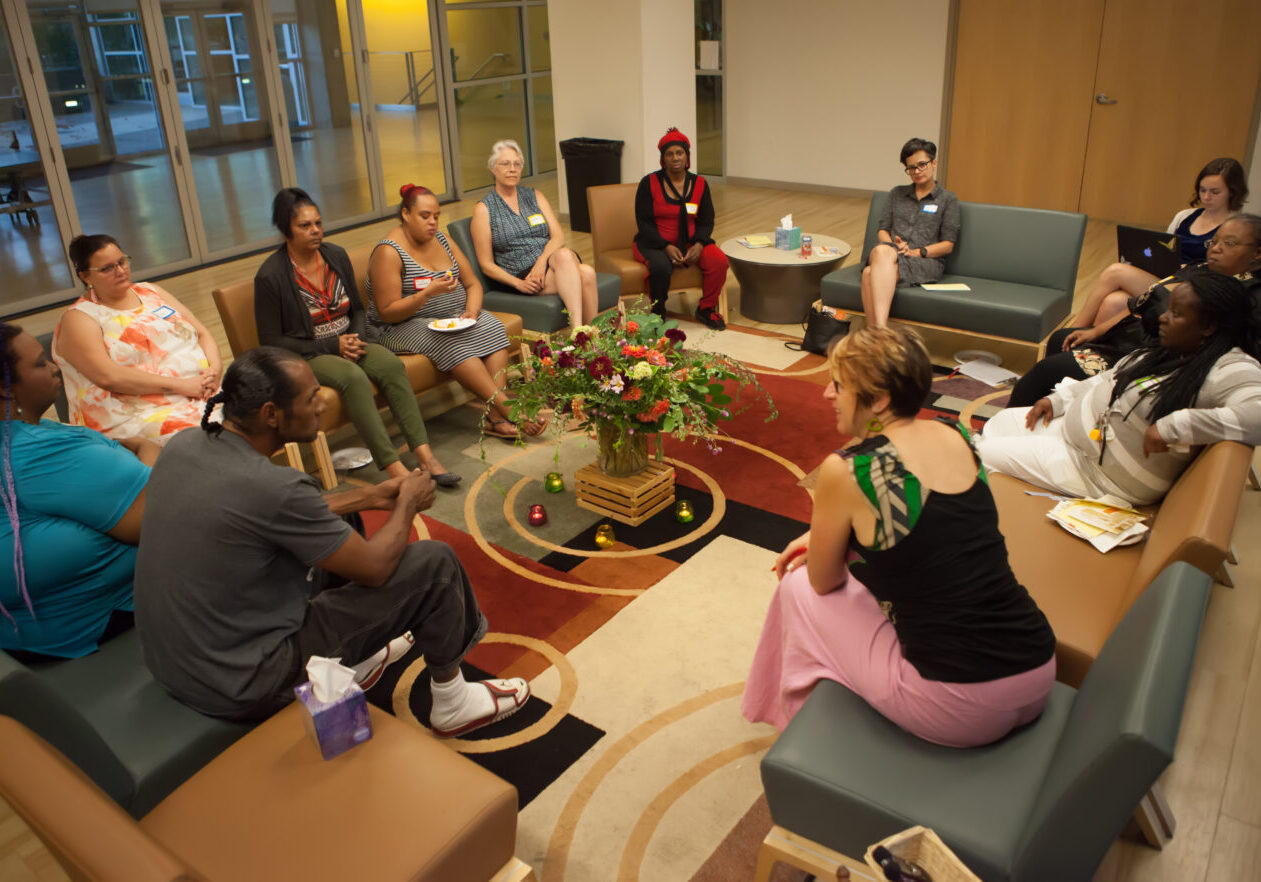
Jesikah maria ross (front right in pink pants) hosted Story Circles in 2018 that focused on the housing affordability crisis in Sacramento, California.
📸: Vanessa Nelson
For their part, journalists can generate community-led story ideas and ultimately shed light on the issues by covering them. In traditional reporting, journalists can often only hear a few perspectives, whereas community-driven reporting involves engaging with many people about a particular issue, in-depth. Over time, newsrooms can also develop long-term relationships with the communities they serve.
“Journalists report accurate, relevant, nuanced work, and it helps people understand, as well, and organizations [understand] whether they take action or not,” ross says. “Just receiving that information is one layer of understanding. We actually understand it so much more and differently because we're making sense of it together.”
“We're in a conversation and dialogue.”
Meanwhile, participants can figure out who in their communities want to continue meeting and working together to solve problems, which ultimately enhances community resilience. They can also learn from each other through their shared experiences. Making these kinds of connections encourages community members to take collective action, according to ross.
“The Story Circles are so beautiful and powerful because they meet multiple goals,” she says.
Fact-Check Yourself
Sources and
further reading
Don't take our word for it —
check our sources for yourself.
